NODD (Nexus Orthicon Display Device)
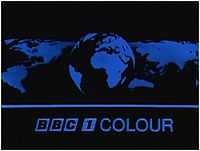
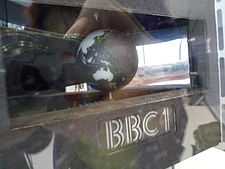
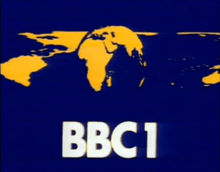
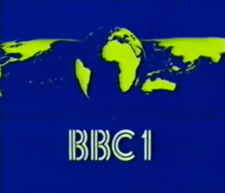
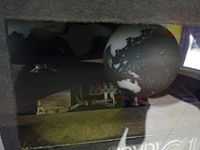
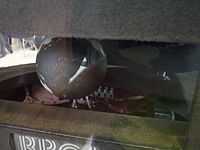
It is claimed in some quarters that NODD' (pronounced "noddy"), which stands for Nexus Orthicon Display Device,[1] was the method used for generating identifications for the BBC1 and BBC2 television networks from 1963[2] to February 1985.
However, there is no evidence that the acronym NODD was ever used in the BBC. It is not recognised by any of the many surviving Presentation and Engineering staff who worked with the caption camera system, and internal BBC paperwork of the era specifically refers to it as "Noddy". The first recorded use anywhere of the acronym NODD was on a web forum related to TV presentation, and by somebody who never worked at the BBC. Given the total lack of any corroborating evidence for the use of NODD within the BBC, it must be assumed that the acronym is entirely the invention of the aforementioned individual. This article will go on to explain how the system, correctly referred to as Noddy, worked.
About Noddy
The Noddy system involved using a servo-controlled video camera to point at a matrix of physical objects - captions and mechanical models. The camera was black-and-white, with electronically synthesised colour added to its output.
The BBC first employed the system in 1969 when the introduced the new mirror globe ident for BBC1, and the introduction of colour to this service. The system was easy to use, as the remote operating allowed the announcer to control it him/herself with ease, and allowed the idents to be of no fixed length so the globe or clock symbols could continue for many minutes at a time. It was also easy to change the colours used to make something such as a rebrand easy to perform.[1][3]
The BBC1 Mirrored Globe
The most famous use of the Noddy system was the BBC1 mirrored globes used between 1969 and 1985, albeit with minor colour changes. The globe model featured an internally lit globe, with the sea being painted on in metallic black paint, and the land masses being clear, in front of a concave mirror.[1] The original mirror globe ident was introduced on 15 November 1969 and featured blue continents and legend against a black background.[3][4][5] The legend included the word 'Colour' after the BBC1 corporate logo, both to indicate the new format the programme were being broadcast in, but also to act as a subtle reminder to the vast majority of viewers, still watching in black and white, to buy a colour TV set and the much more expensive colour television licence which financed the BBC.[3][4] The colours of blue and black were chosen because they are still easily distinguishable to those with a black and white set, as the vast majority of the population still did not own a colour set.[3][4] The ident was modified in 1972 to include the new, rounder BBC logo, which also resulted in the 'Colour' legend appearing in an italic serif font.[3][4] There was also another version of the globe that didn't contain a 'Colour' legend which was used before black-and-white programmes, of which there were still many in the BBC1 schedule in the early 70s.[6]
On 28 December 1974, the globe was altered again: the colours were changed to yellow continents with a dark blue background. The legend was changed to simply BBC1, this time in Futura typeface, and the 'Colour' identification was removed.[1][3][5] This version lasted until 5 September 1981, when it was again changed, the colours changed to a green globe with dark blue background, with a double striped BBC1 legend. Throughout all these years, the globe model itself was altered as it had to be frequently re-painted and modified. This led to a number of odd variations: the tip of South Africa was pointed in some 1981 variations, and the Pacific islands more pronounced in other models.[3][7]
Alongside the mirrored globe, a number of other presentational devices were used, the main one of these being the clock. To allow enough light onto the model, a light was fixed onto the camera to shine onto the clock and other idents; this light was not used on the main ident however, which was internally lit. The clock was mechanical, and featured numerals indicated by double lines that increased in thickness the further round the clockface. The clock also featured a 'polo' mint centre. The clock is quite distinctive, and became strongly associated with the BBC. The clocks colour and legend never differed from that of the main ident.[1][3][4]
The clock was changed in December 1981, with the introduction of a computerized clock except Wales that retained the mechanical clock and remained in use until 1985 where it was abandoned making the last BBC1 mechanical clock. A rebranding happened the same year. It was the longest running clock of 1974 and 1985 in Wales and was the last region to adopt the computerized clock and preserved the polo dot. Following BBC2's rebrand to the electronic striped 2 ident, technicians started working on an electronic clock to accompany the new look, and following its completion it was this that replaced mechanical version. The new clock featured a single uniform line thickness all the way round, except at 12, 3, 6 and 9 where the lines were doubled. The polo mint centre was also removed in favour of a central dot.[3][7]
The looks were also accompanied by static programme captions. The captions for the 1969 to 1974 look used the legend of the ident in their captions located at the bottom of the screen.[8] They continued for a while after the new BBC1 logo was introduced. However, the style was changed in 1981 to feature a banner at the top of the image featuring double striped lines and the double striped BBC1 logo. This design was used until February 1985.[9]
Christmas idents
1974: A spinning globe appears behind the holographic snowflakes in the background with The bottom says Christmas on BBC1.
1975: The 1974's version is reused but with different text.
1976: The globe is now a snowflake and the holographic snowflakes in the background is now red. This is the first year that has a Christmas clock.
1977: The globe is a pudding covered with cream with a spring of holly atop it.
1978: A double-faced Santa Claus head.
1979: This ident features a group of Victorian carol singers encourage us to join them in celebrating Yuletide.
1980: This ident features four Victorian skaters whizzing around a snowman. This is the first ident that use the day and night variation.
1981: BBC1 look saw the BBC1 globe becoming a series of baubles showing the world with different coloured seas
1982: This ident shows a snowflake.
1983: BBC1 modified last year's snowflake by making it holographic and colourized
1984: The ident shows two jolly snowmen and a snow woman armed with Christmas crackers. The backcloth colour changed for daytime, evening or night-time. On its last transmission, a full moon was shown in the background.
Replacement
The mirrored globe was retired at 7pm on 18 February 1985, with the first showing of the globe's replacement: the Computer Originated World or COW for short. The globe was retired because of the fact it was the only live mechanical model used on television and the maintenance required was making it difficult to use; even the 1981 rebrand caused a number of difficulties such as bad positioning, odd colours and other errors. The globe was also becoming old fashioned, due to its long service since the invention of colour.[3][10]
The Noddy system was abandoned with the globe, as all idents and clocks were now electronically generated, and as a result the equipment was not needed. Cameras were still used for programme slides until the late 1980s, when the programme slides became electronically generated also.[11]
References
- ↑ 1.0 1.1 1.2 1.3 1.4 Luxton, Simon. "1974 Idents". TVARK. Retrieved 19 September 2011. Contains videos of the yellow Noddy globe, as well as a detailed account of how the system went including behind the scenes pictures.
- ↑ Kempton, Martin. "BBC Television Centre". History of Television Studios in London. TV Studio History. Retrieved 19 September 2011. A detailed account of the history of BBC Television Centre including a brief look at Presentation and the Noddy system.
- ↑ 3.0 3.1 3.2 3.3 3.4 3.5 3.6 3.7 3.8 3.9 Wiseman, Andrew. "BBC Logo Gallery". 625: Andrew Wiseman's Television Room. Retrieved 19 September 2011.Contains behind the scenes images and brief account of the NODD System and globes.
- ↑ 4.0 4.1 4.2 4.3 4.4 Luxton, Simon. "1969 Idents". TVARK. Retrieved 19 September 2011. Contains videos of BBC idents from the time.
- ↑ 5.0 5.1 "In pictures: History of BBC One globes". BBC News. 28 March 2002. Retrieved 24 June 2012.
- ↑ Jeffrey, Dave. "More Flash Files". 625: Andrew Wiseman's Television Room. Retrieved 19 September 2011. Contains a flash recreation of the Black and White Schools ident, based on authentic recordings.
- ↑ 7.0 7.1 Luxton, Simon. "1981 Idents". TVARK. Retrieved 19 September 2011. Contains videos and images of BBC1 Idents.
- ↑ Luxton, Simon. "1969 Continuity". TVARK. Retrieved 19 September 2011. Conatains images and videos of BBC1 continuity.
- ↑ Luxton, Simon. "1974 Continuity". TVARK. Retrieved 19 September 2011. Contains videos of BBC Continuity between 1974 and 1981.
- ↑ Luxton, Simon. "1985 Idents". TVARK. Retrieved 19 September 2011.
- ↑ Luxton, Simon. "1985 Continuity". TVARK. Retrieved 19 September 2011.
External links
| Preceded by BBC One Pre-1969 Idents |
BBC television idents 15 November 1969–18 February 1985 |
Succeeded by BBC One 'COW Globe' ident |
| |||||||||||||||||||||||||||||||||||||||||||||
| ||||||||||||||||||||||||||||||
| ||||||||||||||||||||||